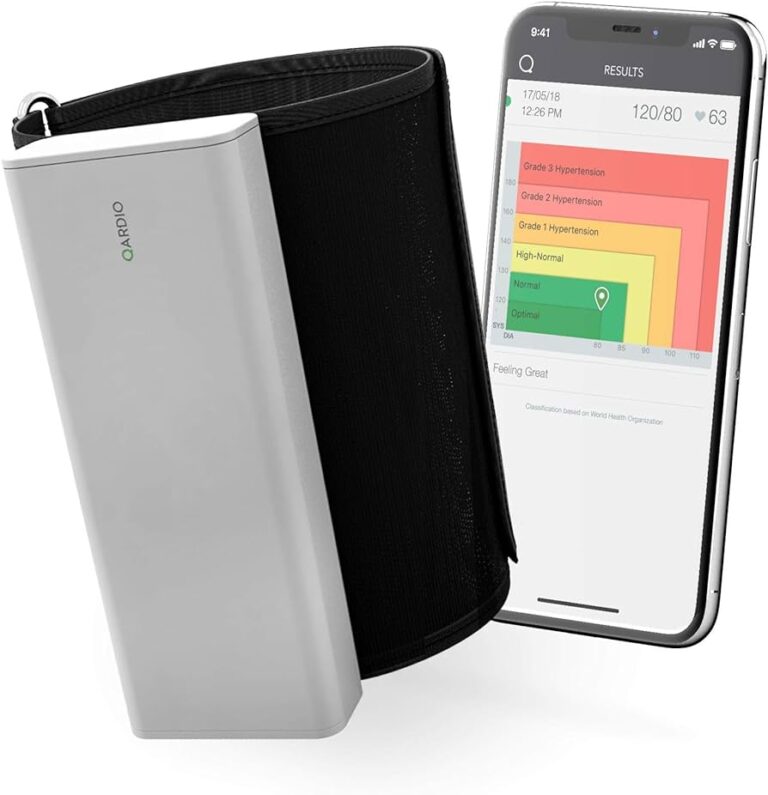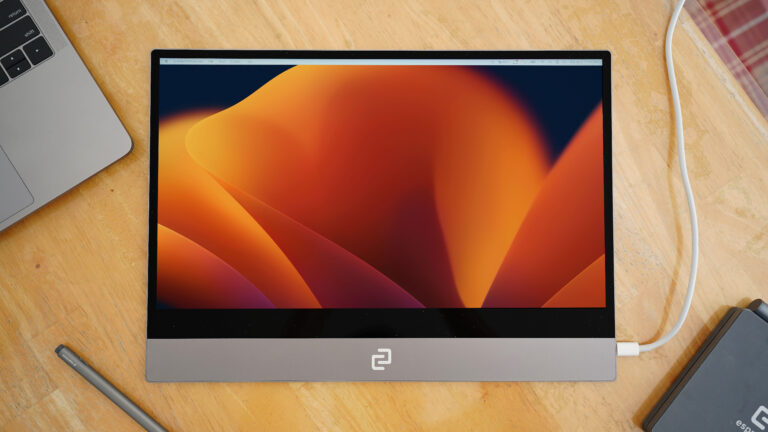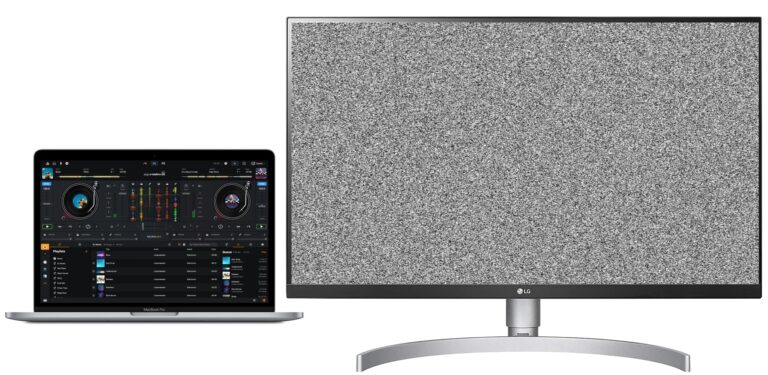Vnc Not Working Without Monitor: Troubleshooting Tips and Solutions
VNC may not work without a monitor attached, causing a blank screen in the viewer. This issue can be resolved by either connecting a monitor or using alternative remote desktop tools like RDP or SSH.
The problem typically arises when the remote computer lacks a display running, making it difficult to access the graphical interface. One suggested workaround is to set a resolution that the computer will use when no monitor is connected. Additionally, disabling hardware acceleration settings in the VNC viewer or on the remote computer may help resolve a black screen issue.
Concept Of Headless Vnc Use
Headless VNC refers to the use of Virtual Network Computing (VNC) to access and control a computer remotely, even when there is no physical monitor attached to it. This allows users to interact with the computer’s graphical interface and perform tasks without the need for a physical display.
Briefly Explain Headless Operation And Vnc’s Role
Headless operation refers to running a computer system without a monitor connected to it. This is common in server environments or when using remote administration tools. In a headless setup, VNC plays a crucial role by providing a remote desktop solution that allows users to view and control the computer’s interface from another device.
With VNC, users can establish a connection to the headless computer and see its GUI as if they were sitting in front of it. This enables them to perform tasks, install software, troubleshoot issues, or access files and applications without the need for physical access to the computer.
Discuss Common Headless Vnc Configurations
There are several common headless VNC configurations that users can implement, depending on their specific needs:
-
X11vnc
X11vnc is one of the popular VNC servers used for headless operation. It allows users to establish a remote desktop session with the headless computer, utilizing the X Window System to display the graphical interface.
-
TightVNC
TightVNC is another widely used VNC server that supports headless operation. It provides a lightweight and secure remote desktop solution, allowing users to access the computer’s graphical interface via a VNC client.
-
RealVNC
RealVNC is a feature-rich VNC server that offers headless configuration options. It enables users to remotely connect to the computer and interact with the GUI, providing a smooth and seamless remote desktop experience.
In addition to these VNC servers, there are also various methods and software tools available for configuring headless VNC on different operating systems and platforms. These configurations typically involve setting up VNC server software, specifying display settings, and establishing secure connections to ensure the remote access is protected.
By using the concept of headless VNC, users can efficiently manage and control their headless systems from anywhere, making it a practical solution for server administrators, developers, and anyone in need of remote access to a computer without a physical monitor.
Vnc Not Working Without Monitor: Core Issues
If you’ve ever tried to use VNC (remote desktop viewer) on a computer without a monitor, chances are you’ve encountered some difficulties. In this section, we will explore the core issues that can cause VNC to fail when there is no monitor connected. By addressing these hardware and software culprits, as well as examining video signal emulation, we can work towards finding solutions to this common problem.
Explore Why Vnc May Fail Without A Monitor
When it comes to VNC not working without a monitor, there are several reasons why this issue may arise. Let’s take a closer look at some of the common factors:
- Misconfigured display settings: VNC relies on the presence of a display device for proper operation. Without a monitor connected, the computer may encounter difficulties performing graphical operations that are necessary for VNC to function.
- Hardware limitations: Some hardware configurations may not support VNC without a connected monitor. Certain graphics cards or chipsets may require a physical display to be present in order to output a video signal to the VNC viewer.
- Software restrictions: In some cases, the software used for VNC may have limitations or restrictions that prevent it from working without a monitor. These limitations may be imposed by the VNC server or viewer software being used.
Address Common Hardware And Software Culprits
To troubleshoot the issue of VNC not working without a monitor, it is important to tackle the common hardware and software culprits. Here are some steps you can take:
- Check display settings: Verify that the display settings on the computer are correctly configured. Ensure that the resolution and other display parameters are set to values compatible with VNC.
- Update graphics drivers: Make sure that the graphics drivers on the computer are up to date. Outdated or incompatible drivers can cause issues with VNC operation, especially without a connected monitor.
- Explored alternative VNC software: If the current VNC software you are using does not work without a monitor, consider exploring alternative VNC software that explicitly supports headless operation.
Examine Video Signal Emulation
In some cases, video signal emulation can provide a workaround for the issue of VNC not working without a monitor. By emulating a display device, the computer can trick the VNC software into thinking that a monitor is connected. This can allow VNC to function properly even in the absence of a physical display. However, it should be noted that video signal emulation may not work in all hardware and software configurations, so its effectiveness may vary.
In conclusion, the core issues that can cause VNC to fail without a monitor are usually related to misconfigured display settings, hardware limitations, and software restrictions. By addressing these culprits and exploring solutions such as checking display settings, updating graphics drivers, and examining video signal emulation, you can increase the chances of successfully using VNC without a monitor.
Initial Diagnostic Steps For Vnc Issues
Experiencing issues with VNC not working without a monitor can be frustrating, but there are several diagnostic steps you can take to troubleshoot the problem. By following these initial steps, you can quickly identify and resolve the underlying issues that may be preventing VNC from functioning properly.
Verify Network Connectivity And Vnc Server Status
Before diving into the specifics of VNC configuration, it’s crucial to ensure that your network connectivity is stable. This includes checking if your computer is connected to the network and if there are any network-related issues that could be affecting VNC. Here are the steps to follow:
- Check the network connection of the computer running the VNC server. Ensure that it is properly connected to the network, either via Ethernet or Wi-Fi.
- Verify that the IP address of the VNC server is correctly configured. You can do this by checking the network settings of your computer or using command-line tools like
ifconfigoripconfig. - Ensure that the VNC server is running and actively listening for incoming connections. You can use the command-line tool
netstatto check if the VNC server is listening on the correct port (usually port 5900 for VNC). For example, on Linux, you can run the commandnetstat -tuln | grep 5900to check if the VNC server is listening on port 5900. - If you are using a firewall or router, make sure that the necessary ports are open and forwarding correctly. Consult the documentation for your specific firewall or router to configure the port forwarding settings.
Check For Headless Mode-specific Errors Or Warnings
When running VNC without a monitor, there can be specific errors or warnings related to headless mode that might impact its functionality. Here are the steps to identify and address headless mode issues:
- Review the VNC server logs for any errors or warnings related to headless mode. These logs can provide valuable insights into the specific issues you are facing. On Linux, you can typically find the VNC server logs in the
/var/logdirectory. - If you encounter any headless mode-specific errors or warnings, search for solutions or workarounds online. Online forums and communities like Super User or Ask Ubuntu can often provide helpful tips and advice.
- Consider updating your VNC server software to the latest version. Developers frequently release updates that address known issues and improve compatibility with headless configurations.
By completing these initial diagnostic steps, you can effectively narrow down the cause of VNC not working without a monitor. Remember to document any findings or error messages encountered during the process as they will be helpful in further troubleshooting or seeking assistance from the VNC community.
Practical Workarounds For Display Dependencies
When using VNC (remote desktop viewer) on a computer without a monitor, you may encounter difficulties. Typically, VNC requires a connected monitor to function properly. However, there are workarounds available that allow you to overcome this limitation and use VNC on headless machines. In this article, we will explore several practical solutions to address the issue of VNC not working without a monitor.
Employ Dummy Plug Or Ghost Adapter Solutions
One effective workaround is to use a dummy plug or ghost adapter. These devices simulate the presence of a monitor by providing a constant signal to the graphics card. By fooling the system into thinking that a monitor is connected, VNC will work as expected. Dummy plugs or ghost adapters are inexpensive and easy to set up. Simply plug the device into the graphics card port, and the computer will recognize it as a connected monitor.
Configure Virtual Display Settings
Another solution is to configure virtual display settings. This involves emulating a virtual display using software tools. One popular tool for Linux systems is “xrandr”. With xrandr, you can create a virtual display that VNC can utilize. By adjusting the resolution and refresh rate, you can mimic the settings of a physical monitor. This trick fools VNC into functioning properly, even without a physical display.
Explain Benefits Of Gpu-based Solutions
Using GPU-based solutions is another effective approach. Graphics Processing Units (GPUs) are powerful hardware components that can handle the display rendering process even without a physical monitor. By leveraging the capabilities of the GPU, you can bypass the need for a connected monitor and use VNC seamlessly. This solution is particularly suitable for high-performance systems with dedicated graphics cards.
It’s important to note that each of these workarounds has its own advantages and limitations. The choice of solution depends on your specific requirements and the resources available. Whether you opt for a dummy plug, virtual display configuration, or GPU-based solution, you can overcome the issue of VNC not working without a monitor and enjoy remote desktop access on headless machines.
Software And Tools For Headless Setup
When it comes to setting up VNC (Virtual Network Computing) without a monitor, there are software and tools available that can help you overcome this limitation. In this section, we will outline VNC servers and clients tailored for headless operations, as well as discuss GPU drivers and virtual frame buffer applications.
Outline VNC servers and clients tailored for headless operationsTo enable VNC functionality without a monitor, specific servers and clients can be used. Here are some popular options:
- TightVNC: It allows remote access to a graphical desktop and can work without a physical monitor.
- Vino: This VNC server supports headless setups, making it suitable for accessing a computer remotely.
- RealVNC: With RealVNC, you can remotely view and control your computer even without a physical display connected.
In addition to VNC servers and clients, GPU drivers and virtual frame buffer applications are crucial for a successful headless setup. These tools ensure that the graphical interface is functioning properly, even without a physical monitor attached. Here are some considerations:
- GPU drivers: Install the appropriate GPU drivers for your system to ensure optimal performance and compatibility.
- Virtual frame buffer applications: Utilize applications like Xvfb (X virtual framebuffer) or Xdummy to simulate a display output, allowing VNC to function without a monitor.
By combining VNC servers and clients tailored for headless operations with GPU drivers and virtual frame buffer applications, you can achieve a successful VNC setup without the need for a physical monitor. These software and tools open up possibilities for remote access and control, making managing your computer or server more convenient and efficient.
Tailoring Vnc Settings For Headless Success
VNC (Virtual Network Computing) is a powerful tool for remote access to graphical interfaces, allowing users to control a computer from another device. However, when attempting to use VNC on a machine without a monitor, you may encounter issues that prevent successful connection. In this article, we will discuss how to tailor VNC settings for headless success, ensuring a smooth and seamless remote access experience.
Adjust Vnc Server Resolution Via Config Files
One common issue with running VNC on a machine without a monitor is the resolution mismatch between the server and the accessing device. To address this, it is essential to adjust the VNC server resolution via config files.
- First, access the VNC server’s config file. Depending on the operating system, the config file location might vary. Common locations include:
- Linux:
/etc/systemd/system/vncserver@.service- Windows:
C:\Program Files\RealVNC\VNC Server\vncserver.ini- macOS:
/Library/LaunchDaemons/com.realvnc.vncserver-x.plist
Ensure that you have the necessary permissions to modify the file.
- Open the config file using a text editor.
- Search for the
geometryorresolutionoption in the file. This option defines the resolution that the VNC server will use. - Adjust the resolution to match the accessing device’s resolution or choose a suitable resolution that works best for your needs.
- Save the changes to the config file and restart the VNC server for the new resolution to take effect.
Implementing Persistent Vnc Sessions
Another challenge when using VNC without a monitor is the lack of a persistent session. Without a monitor connected, the VNC session may terminate when the server loses its graphical interface.
To ensure a persistent VNC session, consider implementing the following steps:
- Install a virtual display manager, such as Xvfb (X virtual framebuffer), which simulates a monitor and allows headless operation. To install Xvfb, use the package manager specific to your operating system (e.g.,
aptfor Ubuntu). - Configure the virtual display manager to start when the system boots up. This step ensures that a virtual monitor is always available, even without a physical one.
- Configure the VNC server to use the virtual display created by Xvfb. In the VNC server’s config file, specify the display number or path to the Xvfb virtual display.
- Save the changes to the config file and restart the VNC server for the persistent session to be established.
By implementing these steps to establish a persistent VNC session, you can connect and control your headless machine reliably, even without a physical monitor.
Optimizing Performance And Stability
Using VNC (remote desktop viewer) on a computer without a monitor can be a frustrating experience. However, by following some best practices for updates and routine maintenance, as well as troubleshooting common issues post-setup, you can optimize the performance and stability of your VNC connection.
Best Practices For Updates And Routine Maintenance
Regularly updating your VNC server and client software is essential to ensure compatibility and security. Here are some best practices to consider:
- Keep your VNC software up to date: Check for updates regularly and install the latest versions of your VNC server and client software to benefit from bug fixes, performance improvements, and new features.
- Update the operating system: Keeping your operating system up to date is equally important. Install the latest patches and updates to ensure compatibility and security.
- Perform routine maintenance: Regularly perform routine maintenance tasks, such as clearing temporary files, optimizing disk space, and checking for any hardware issues that may affect your VNC connection.
Troubleshooting Common Issues Post-setup
Even after setting up your VNC connection, you may encounter some common issues. Here are some troubleshooting steps to consider:
- Check the display settings: Ensure that the display settings on the remote computer are properly configured to allow VNC connections without a monitor. Adjust the resolution settings if necessary.
- Verify the VNC server settings: Double-check the VNC server settings and make sure they are configured correctly to allow remote access without a monitor attached. Some VNC server software may have specific options or configurations for headless setups.
- Restart the VNC server: If you encounter connection issues, try restarting the VNC server. This can help resolve any temporary glitches or conflicts that may be affecting the stability of your VNC connection.
- Test the connection with a monitor: If you are still experiencing issues, try connecting to the remote computer with a monitor attached. This can help determine if the issue is specific to the VNC setup or if there are other underlying factors affecting the connection.
By following these best practices for updates and routine maintenance, as well as troubleshooting common issues post-setup, you can optimize the performance and stability of your VNC connection. Remember to regularly update your VNC software and operating system, perform routine maintenance tasks, and troubleshoot any issues that may arise. With these steps in place, you can enjoy a seamless and reliable remote desktop experience.

Credit: www.amazon.com
Frequently Asked Questions Of Vnc Not Working Without Monitor
Can I Use Remote Desktop Without Monitor?
Yes, you can use Remote Desktop without a monitor. You can connect to a Windows Server using remote administration tools like Remote Desktop Protocol (RDP) or Secure Shell (SSH). VNC Connect also allows you to access a headless Raspberry Pi without a monitor.
Ensure to disable hardware acceleration if you experience display issues or a black screen.
Can Vnc Run Headless?
Yes, VNC can run headless. You can access a headless Raspberry Pi with VNC Connect, allowing you to use it without a monitor. This is useful if your Pi is performing a task constantly but you don’t need access to it all the time.
Why Is My Vnc Not Connecting?
VNC may not connect if there is no monitor connected to the computer. This is a common issue reported by users. To resolve this, you can try connecting a monitor to the computer or using remote administration tools like RDP or SSH to access the computer without a monitor.
Why Is My Vnc Viewer Showing A Black Screen?
The VNC viewer may show a black screen due to hardware acceleration settings. Try disabling hardware acceleration in the VNC viewer settings to fix the issue.
Conclusion
To summarize, connecting to a VNC server without a monitor can be a challenge. Many users have reported blank screens or display issues when attempting to access a remote desktop. While there are workarounds available, such as using RDP or adjusting resolution settings, it is clear that a physical monitor connection is often necessary for VNC to function properly.
For those looking to use VNC without a monitor, it is important to explore alternative solutions and troubleshoot any hardware acceleration or display settings that may be causing issues.






